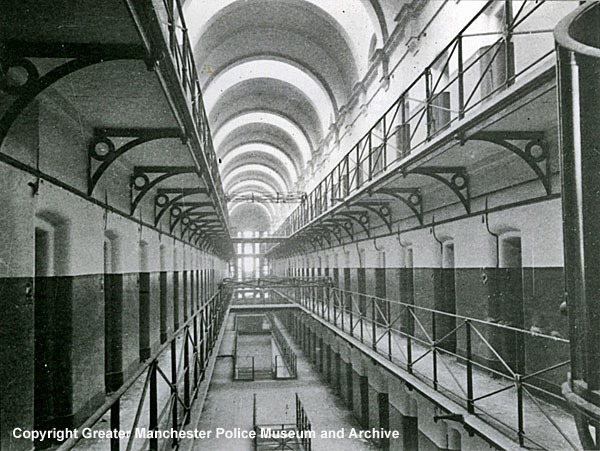|
Belle
Vue Prison
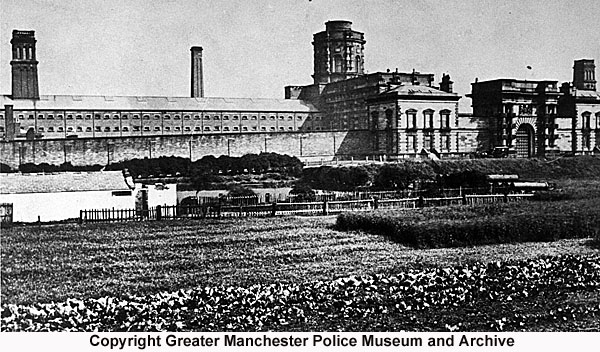 (The image above is
shown with the permission of the Greater Manchester
Police Museum and Archive. If you click on this
link you can see more historic images from their Flickr
Photostream)
Belle Vue Prison
sat beside Hyde Road in West Gorton next door to
John Jennison’s Belle Vue Gardens. You can
just see it on the fringes of the maps below,
dated 1885. In the first map number 1
indicates Piccadilly in the city centre, number 2
is the site of the Fenian attack that you will
read about below, and number 3 marks the site of
the prison.
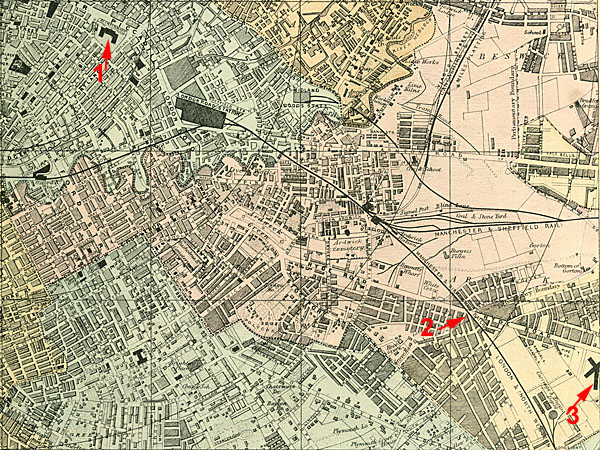 Below is a closer
view of the prison site.
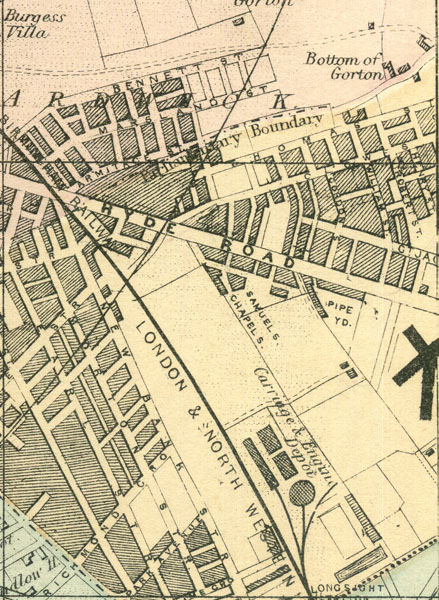 It was completed in 1848 and admitted its first prisoners a year later. Initially it was owned by Manchester Corporation. The building was composed of four sections, three for male prisoners and the fourth for women. One description of the prisons says this about it, “The walls of the prison were strongly buttressed. The entrance on Hyde Road consisted of a double doored Janitors Office and a Courtyard, after crossing this you came to a ponderous iron lined Portcullis which was raised and lowered by a windlass on a side wall, this was worked by a key handle kept by the Duty Warden. Once through the Portcullis there was a lawn to cross before coming to the main entrance. Inside there were Reception Rooms, Waiting Rooms, the Governor's Office, Magistrates Rooms, the Hospital and the Chapel.” Below you can see a view along one of the prison ranges. (The image above is
shown with the permission of the Greater Manchester
Police Museum and Archive. If you click on this
link you can see more historic images from their Flickr
Photostream)
Records reveal that
a year after the prison opened it accommodated 329
male prisoners and 119 females. Most of the
prisoners were serving short sentences or were on
remand awaiting trial in Manchester. The
prison’s claim to fame came in 1867 when a prison
van containing six prisoners was enroute to the
prison from the courthouse in the city centre.
Two of the prisoners in the van were men who had
been arrested under the vagrancy act by police
officers in Shudehill who suspected them of planning
to rob a shop. The two men were infact members
of a Fenian group and as the van passed underneath
the railway bridge on Hyde Road a group of 30 or 40
men attacked the van and its mounted escort and
attempted to release the two prisoners.
Apparently the escort fled and in the melee the
police officer in the van was shot and killed and
the two prisoners escaped. The incident was
described as the “Manchester Outrage”.
Ultimately three men,
William Allen, Michael
Larkin and Michael O' Brien
William Allen, Michael Larkin and Michael O'Brien,
were tried, convicted and hung at the New Bailey
Prison.
William Allen, Michael
Larkin and Michael O' Brien who were executed for
the murder of Sergeant Brett - See more at:
http://www.pmsa.org.uk/pmsa-database/4650/#sthash.71vsNOmD.dpuf
William Allen, Michael
Larkin and Michael O' Brien who were executed for
the murder of Sergeant Brett - See more at:
http://www.pmsa.org.uk/pmsa-database/4650/#sthash.71vsNOmD.dpuf
Over time they became known as the “Manchester
Martyrs”.In 1877 the prison
passed from the control of Manchester Council to the
British Government. In 1888 it was declared
unsafe, apparently due to subsidence from underlying
colliery works. The prison was demolished in
1890. Some of the stone was acquired by the
Jennisons who used it to build an enclosure for
rhinos.
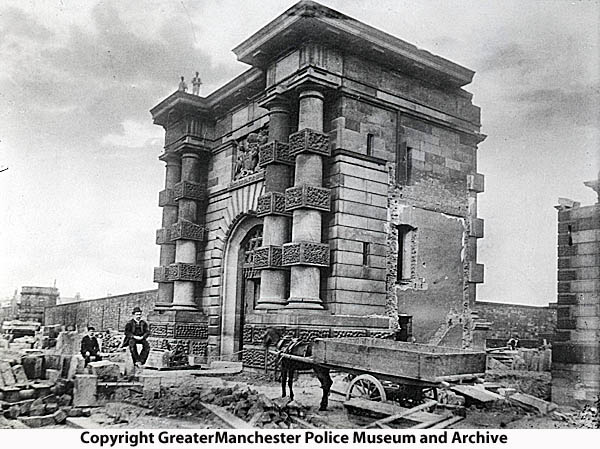 (The image above is shown with the permission of the Greater Manchester Police Museum and Archive. If you click on this link you can see more historic images from their Flickr Photostream) A housing estate was built on the land, as you can see below. The red arrow points to the location of the former prison. It was here, on Stowell Street, that the British actor John Thaw grew up. 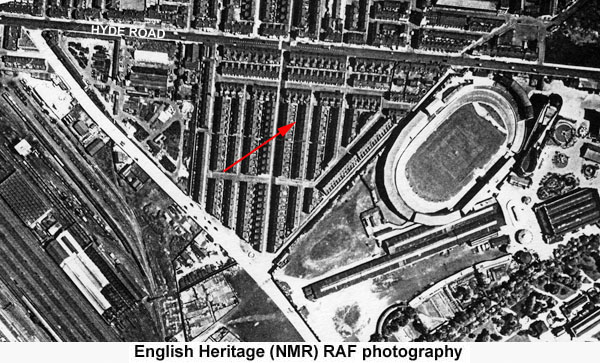 Close Window |
